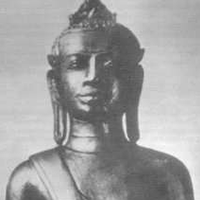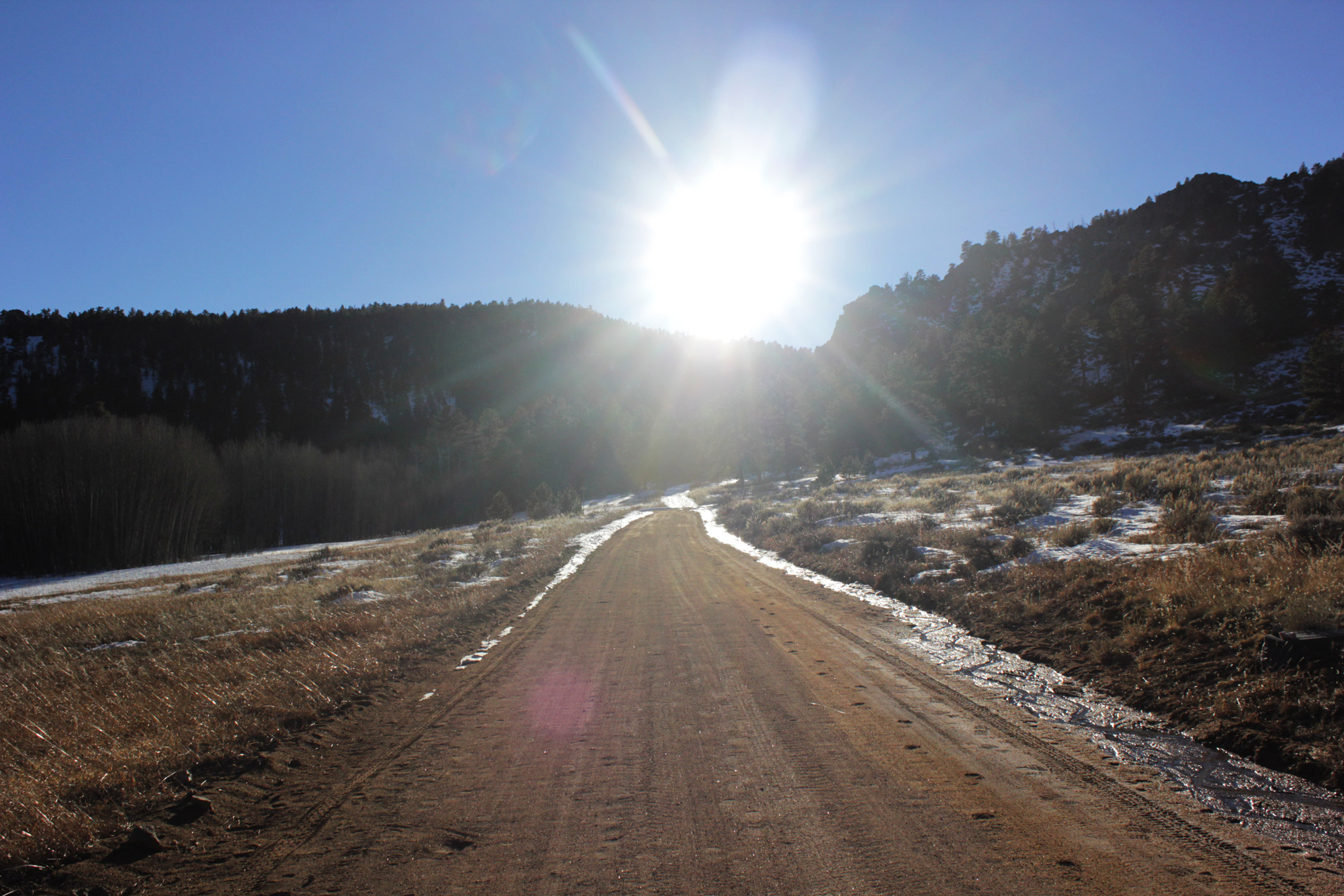Four Noble Truths for the Age of Natural Consequences / Great Turning
— By Bez
Living as we do in an epoch where the entire span of recorded history is inevitably brought to bear upon the question of whether we will redeem or annihilate human enterprise and the natural order out of which it emerged, it behooves our species to seek out the highest expressions of truth, goodness and beauty we’ve produced. In our long, often nightmarish march through time a few truly transcendent ones, ascended masters of apparent reality, have appeared to point a finger skyward for the rest of us. Given what we’ve learned about evolutionary and now quantum processes, it’s not completely self-delusory to imagine an innate, inexplicable intelligence at work within human endeavor giving us these clarifying voices. At the same time it’s useful if not vital to recall that these sages prophesied in very different times than our own. To maximize efficacious deployment of ancient wisdom teachings, certain patches from our contemporary worldview make sense.
The Great Sage of the Shakya clan Siddhartha Gautama seated beneath the bodhi tree is one of the most compelling symbols we have inside or outside of religion for the fulfillment of human potential. His iconic dignified repose is the living embodiment of the Four Noble Truths he elaborated upon his interior victory over Mara, demon of delusion and destruction: 1) life contains suffering, 2) suffering is borne of craving and aversion, 3) craving and aversion can be cured, and 4) the cure is the Eightfold Path: Right View, Intention, Speech, Action, Livelihood, Effort, Mindfulness and Concentration. Initially reluctant to share his teachings on the count of the Dharma being deep and difficult to convey, the Buddha appears to anticipate doubts and conflicts of future converts in the Charter of Free Inquiry: Anguttara Nikaya 3.65 the Kalama Sutra:
“Do not go upon what has been acquired by repeated hearing; nor upon tradition; nor upon rumor; nor upon what is in a scripture; nor upon surmise; nor upon an axiom; nor upon specious reasoning; nor upon a bias toward a notion that has been pondered over; nor upon another’s seeming ability; nor upon the consideration, ‘The monk is our teacher.’ Kalamas, when you yourselves know: ‘These things are good; these things are not blamable; these things are praised by the wise; undertaken and observed, these things lead to benefit and happiness,’ enter on and abide in them.” (My emphasis)
The Buddha, at least by this telling, made traditions and teachers secondary to direct experience and wise moral council, essentially permitting every successive generation of his followers to formulate the Dharma according to its own prevailing causes and conditions… a unique characteristic for a “religion”. In an era of hyper-technological, hyper-connected, postmodern, postindustrial dislocation and disruption, direct experience is driving an ever-widening moral consensus among the awake that we must fundamentally alter, at the deepest systemic and structural levels, how we conduct life on our finite planet. Are there ways to merge the truth, goodness and beauty of The World Honored One’s injunctions with current direct experience and awakened moral consensus?
Far better trained minds than mine have grappled with these questions in-depth and there is a wide spectrum of beliefs on Buddhism’s practical implications for our time. At one end is someone like philosopher Ken Wilber, whose “integral” point of view seems largely positive about the prospects for a globe-rescuing shift in personal and collective consciousness. At the other end is someone like deep-ecology systems theorist Johanna Macy, whose “work that reconnects” paints a much bleaker picture of virtually assured wholesale planetary collapse. Which is true? Inasmuch as the Great Sage advocated a ‘middle way’ path of moderation, the ideas articulated at the two polarities, both explicitly informed by Buddhism, could be seen as dualistically extreme. Vagaries in the nature and applicability of rarefied states, and gaps and blind spots in the scientific method respectively, are factors here.
A path through the middle has been offered by radical academics like mathematician, ethnobotanist and self-professed “psychonaut” Terence McKenna, whose mind-bending metaphysical musings are nicely summarized in a documentary available online called “The Transcendental Object at the End of Time.” Building on psycho-spiritual breakthroughs by Timothy Leary and Richard Alpert, many of his provocative notions – culture as operating system, planet as conscious actor deploying plant emissaries to intercede on behalf of nature, human endeavor both pushed from the past by history and pulled to the future by “dynamic attractors” – have influenced my own. Although he acknowledged (and catalogued) the terribleness of the planet’s carrying capacity being surpassed, he also foresaw that routine daily life would assume boundary-dissolving attributes that would force humankind to assume, through transformed consciousness, its proper position within the natural order, thereby healing it.
The intellectual project of creating hierarchical taxonomies – presuming arbitrarily assigned “natural” categories were fixed permanently in time and space – and then establishing political, economic, social and cultural institutions based on those taxonomies, is more or less why we find ourselves in this age of natural consequences. Try as we might, we have yet to carve out a niche definitively disconnected from and superior to nature. If the crops fail, WE fail. In his book The Great Turning: from Empire to Earth Community, David Korten points out that hidden within the crises of global empire is an opportunity to consciously and collectively choose the kind of future we really want. At the root of these new life-affirming choices is our ability to tell self-defining stories: choosing narratives of cooperation, compassion and mindful self-regulation and partnership instead of the Three Poisons: greed, hatred and delusion.
The issue of stories, of points of view, is no small one! In essence they are thought forms, and as I discussed in a separate essay, thought forms regularly appear one way or another in materiality. Terence McKenna proposed that indeed the world itself was constructed primarily out of language and selection of words affirming separateness and meaninglessness establish those as reality just as readily as words of interconnection and purpose manifest those as reality. And here we approach just why Buddhism has so much to offer The Great Turning: stories about Buddha’s life and teaching, the scriptural admonishments, philosophical discourses, poetic sutras, are multilayered, pulsating linguistic representations of the truth, goodness and beauty he realized. This boundary-free aliveness is enhanced by the tendency of the Pali and Sanskrit tongues early Buddhism was transmitted in to feature single words with many possible transliterations to English. A classic example is the word dukkha, which can mean “pain”, “suffering”, “dissatisfaction”, “stress”, “affliction”, “unease”, etc.
This boundary-transgressing aspect of Siddhartha’s teaching also corresponds in well publicized ways to mainstream science. Quantum physics, for a long time considered the most enviable of all scientific disciplines for the way its experiments matched its mathematical predictions to nine decimal places, uncovered mysteries about the subatomic realm that were unprecedented, revolutionary… and yet curiously similar to things that had been said over 2000 years prior. Werner Heisenberg, one of the most famous quantum physicists of all time, after recognizing that you could know either the speed of a subatomic particle or its location but not both, said:
“What we observe is not nature itself, but nature exposed to our method of questioning.”
This method of questioning had uncorked a bizarro-world where sub-microscopic objects
- act like both waves and particles
- are 99.999999% empty
- emerge from a single field
- are spread across infinite space until observed where they collapse into discreet local quantities
- are interconnected (or “entangled”) to the point of identical behavior irrespective of distance, and beyond. One of Heisenberg’s colleagues Max Planck, himself a star quantum physicist, remarked:
“As a man who has devoted his whole life to the most clear headed science, to the study of matter, I can tell you as a result of my research about atoms this much: There is no matter as such. All matter originates and exists only by virtue of a force which brings the particle of an atom to vibration and holds this most minute solar system of the atom together. We must assume behind this force the existence of a conscious and intelligent mind. This mind is the matrix of all matter.”
In the scriptural collection the Dhammapada, Siddhartha advised the bhikkhus assembled around him:
“All we are is a result of what we have thought, mind is everything…”
There’s also the teaching Pratityasamutpada, which yields the proposal:
When there is this; that comes to be
With the arising of this; that arises
When there is not this; that does not come to be
With the cessation of this, that ceases.
Hence Buddhism and quantum physics together point to a very ancient cosmological formula:
Out of zero comes One
Out of one comes Two
Out of two comes multiplicity/Infinity.
In other words: out of emptiness, or the zero-point field, comes form, or entanglement; out of form or entanglement comes duality, samsaric and wave-particle; out of samsaric and wave-particle duality come the myriad manifestations of apparent reality. Bottom line, the Cosmos and everything in it has a single Source, is basically a mental projection and an expression or appearance of a unified whole refracted into countless self-organizing holographic wholes/parts.
Having laid this groundwork we may propose an addendum to the prescriptions of the Great Sage, a Four Noble Quantum Truths dedicated to the construction of a lifesaving, life-serving narrative for the Great Turning. To wit:
- The planet, as a single organism, is suffering
- Planetary suffering arises out of human alienation from self, others and the web of life
- Acceptance of the direct link between thought and matter (or belief and reality) can alleviate this suffering
- The direct link between thought and matter necessitates a Quantum Eightfold Path: a Right quantum View, Intention, Speech, Action, Livelihood, Effort, Mindfulness and Concentration.
Hopefully, more will be said about these propositions in the days to come, but for now a few preliminary notes.
Regarding the Third Truth – as it stands, assertion of a causal link between thought and matter generates the bitterest kind of acrimony, drawing scornful accusations of “pseudoscience”, “New-Age nonsense”, “woo-woo”, etc from rational materialists. Per the Awakened One; I wouldn’t make this claim without personal experiential evidence, which I detail in a separate essay.
Regarding the Fourth Truth – a Quantum Eightfold Path naturally requires a lot of specificity… more than is practical to deliver in this essay. In summary, right quantum view, intention, speech, action, livelihood, effort, mindfulness and concentration would involve making decisions realizing that quantum entanglement ultimately makes every thought and act vital, no matter how seemingly insignificant. Micro and macro-worlds are instantly, simultaneously impacted.
Om Mane Padme Hum ~ May all beings be happy
About the Author


